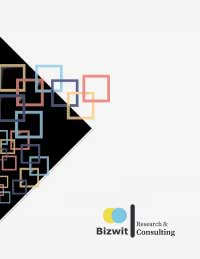Global Fiber Cement Rain-Screen Panels Market is valued approximately at USD 35.250 billion in 2019 and is anticipated to grow with a healthy growth rate of more than 6.5% over the forecast period 2020-2027. Fiber Cement Rain-Screen Panels are made up of cement, water, cellulose fiber and pulverized limestone. They are used in building and offices as they are waterproof and can easily resist high pressure winds and rain water and have the longer lifespan and are durable. Increasing demand for energy-efficient buildings, government guidelines and awareness for environment welfare and investment in fiber cement rain-screen panels by big market players are fueling the growth in demand of fiber cement rain-screen panels. For instance in March 2018, Kingspan invested in the Nordic market to boost its premium product range of Kooltherm insulation. In the U.S., as per the Federal Energy Policy Act 2005; a tax credit of up to USD 2000 is provided for builders of new energy-efficient homes constructed as per the Federal Manufactured Homes Construction and Safety Standards. However, the fiber cement rain-screen panels market faces intense competition from the alternative rain-screen panel materials including terracotta, metal, high-pressure laminates and composite materials which will impedes the growth of the market over the forecast period of 2020-2027. Also, Rising awareness for energy-efficient construction, the need for renovation of old buildings, increasing over cladding activities, and government regulation for green buildings are likely to increase the market growth of fiber cement rain-screen panels during the forecast period.
The regional analysis of global Fiber Cement Rain-Screen Panels market is considered for the key regions such as Asia Pacific, North America, Europe, Latin America and Rest of the World. Europe is the leading/significant region across the world in terms of market share owing to strong demand from the countries like U.K., Germany, France, Russia and Italy due to tremendous growth of the construction opportunities. Whereas, Asia-Pacific is also anticipated to exhibit highest growth rate / CAGR over the forecast period 2020-2027. Factors such as rising population coupled with strong economic development would create lucrative growth prospects for the Fiber Cement Rain-Screen Panels market across Asia-Pacific region.
Major market player included in this report are:
Saint-Gobain SA
Etex Group NV
American Fiber Cement Corp.
Cladding Corp.
James Hardie Industries plc
Evonic Industries AG
Cembrit
Sanle Group
Guangdong Soben Green
Troy Industries
The objective of the study is to define market sizes of different segments & countries in recent years and to forecast the values to the coming eight years. The report is designed to incorporate both qualitative and quantitative aspects of the industry within each of the regions and countries involved in the study. Furthermore, the report also caters the detailed information about the crucial aspects such as driving factors & challenges which will define the future growth of the market. Additionally, the report shall also incorporate available opportunities in micro markets for stakeholders to invest along with the detailed analysis of competitive landscape and product offerings of key players. The detailed segments and sub-segment of the market are explained below:
By Type:
Ultra-Thin Panels
Thick Panels
Super Thick Panels
Conventional Panels
By Application:
Residential
Commercial
Industrial
By Region:
North America
U.S.
Canada
Europe
UK
Germany
France
Spain
Italy
ROE
Asia Pacific
China
India
Japan
Australia
South Korea
RoAPAC
Latin America
Brazil
Mexico
Rest of the World
Furthermore, years considered for the study are as follows:
Historical year – 2017, 2018
Base year – 2019
Forecast period – 2020 to 2027
Target Audience of the Global Fiber Cement Rain-Screen Panels Market in Market Study:
Key Consulting Companies & Advisors
Large, medium-sized, and small enterprises
Venture capitalists
Value-Added Resellers (VARs)
Third-party knowledge providers
Investment bankers
Investors



